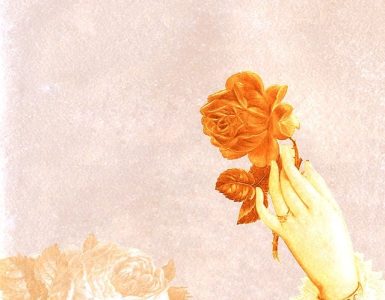Ever wondered why we do the things we do? Why certain customs persist, seemingly out of nowhere? Turns out, a lot of our cultural practices are bizarrely, hilariously, and sometimes tragically linked to historical events you might never have guessed. Prepare for a whirlwind tour through time, where we uncover the surprising origins of everyday habits and traditions.
The Humble Potato: A History of Famine and Revolution
The potato, now a global staple, wasn’t always so celebrated. Its introduction to Europe was initially met with suspicion, even revulsion. But by the 18th century, it became a cornerstone of Irish agriculture. This reliance, however, proved disastrous. When potato blight struck in the 1840s, the resulting famine led to mass starvation and emigration, forever shaping Irish culture and demographics. The Great Famine isn’t just a historical event; it’s woven into the very fabric of Irish identity, impacting everything from its diaspora to its persistent anxieties around food security.
Forklore: A Surprisingly Latecomer to the Table
Imagine eating a medieval banquet without a fork. Sounds messy, right? It was! Forks didn’t become commonplace in Europe until the Renaissance, initially considered an affectation of the elite. Before that, knives and spoons were the tools of the trade (and often the same knife used for cutting was used for eating!). The adoption of the fork is a fascinating example of how seemingly minor changes in technology can ripple through culture, influencing social norms and even etiquette. What Is the Cultural Significance of the Renaissance?
The Curious Case of the Cat: From Goddess to Pest to Internet Star
Cats have had a rollercoaster ride in human history. In ancient Egypt, they were revered as goddesses, even mummified and buried with great ceremony. But their status fluctuated wildly over time. During the Middle Ages in Europe, they were associated with witchcraft and persecuted. Then, in the 17th and 18th centuries, they became fashionable companions of the wealthy. Today? They rule the internet. The cat’s journey highlights how cultural attitudes can dramatically shift—sometimes in surprisingly unpredictable ways.
A Toast to… Taxes? The Unexpected Origins of Festive Drinks
Many of our favorite festive drinks have surprisingly humble – and sometimes tax-related – origins. Consider the punch bowl: a popular vessel for communal drinking, its origins can be traced back to the British East India Company’s trade in spices, which were often used to flavor the “punch” or potent drinks. Think about that the next time you raise a glass at a holiday gathering – you might be participating in a tradition born from centuries of global trade and tax policies.
The Unexpected Influence of Warfare: From Samurai Swords to Baseball Bats
Warfare, sadly, has had a profound impact on cultural development. Consider the katana, the iconic curved sword of the Samurai. Its design and the martial arts associated with it deeply shaped Japanese culture, influencing everything from aesthetics to social structures. Even seemingly unrelated items have links to warfare: the design of a modern baseball bat, for instance, owes a surprising debt to the evolution of weaponry through the ages.
The Silk Road: More Than Just Trade, a Cultural Highway
The Silk Road is often talked about as a trade route, but it was so much more; a veritable highway of cultural exchange. It facilitated the spread of ideas, religions, technologies, and artistic styles across vast distances. The influence of Buddhism on East Asia, the exchange of mathematical knowledge between the East and West, and even the spread of pasta (yes, pasta!) are just a few examples. The Silk Road’s legacy is etched into the cultural landscapes of countless societies.
The “Lost” Languages: Whispers from the Past
Thousands of languages have been lost over time; many without a single surviving written word. These languages, however, hold significant clues to past cultures, migrations and human evolution. Their disappearance highlights both the fragility and the vibrancy of human communication, offering a poignant reminder of our shared history.
From Royal Decree to Everyday Wear: The Evolution of Clothing
What we wear today is often a reflection of centuries of cultural shifts, technological breakthroughs, and social changes. Take the simple button: once a mark of wealth and status, it’s now ubiquitous. Even the seemingly mundane act of wearing shoes has undergone a dramatic evolution; reflecting shifts in social status, practicality, and cultural expectations. Clothing often tells a story of social hierarchy and technological progress.
The Enduring Power of Storytelling: Myths, Legends, and Their Lasting Impact
Myths and legends are far more than just entertaining tales; they play a critical role in shaping cultural values, beliefs, and social norms. They explain natural phenomena, moral dilemmas, and the origins of societies. From the Greek myths to Indigenous creation stories, these narratives continue to exert an influence on our world, often subtly shaping our perceptions and behaviors.
The Unexpected Legacy of Ancient Civilizations
Ancient civilizations, despite their distance in time, continue to leave their mark on us today. The architectural innovations of the Romans, the mathematical discoveries of the Greeks, and the legal systems of the Babylonians are but a few examples of their enduring legacies. These contributions are not just academic curiosities; they often form the foundations upon which modern societies are built.
Exploring the links between history and culture is like uncovering a hidden treasure map. Each tradition, custom, and belief holds a clue to the past, often revealing unexpected connections and fascinating stories that reshape our understanding of the present.

























Add comment